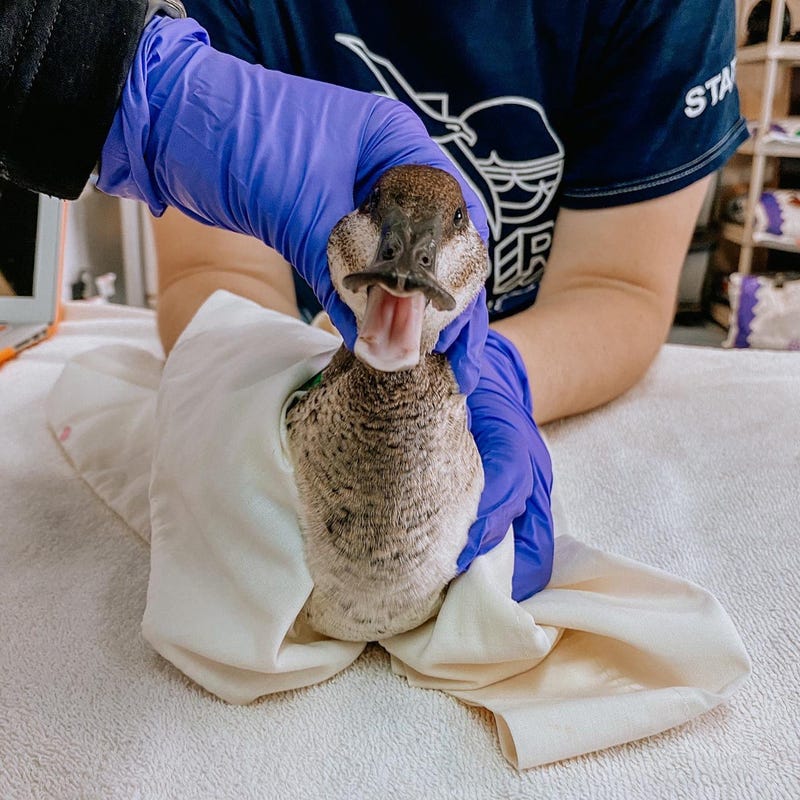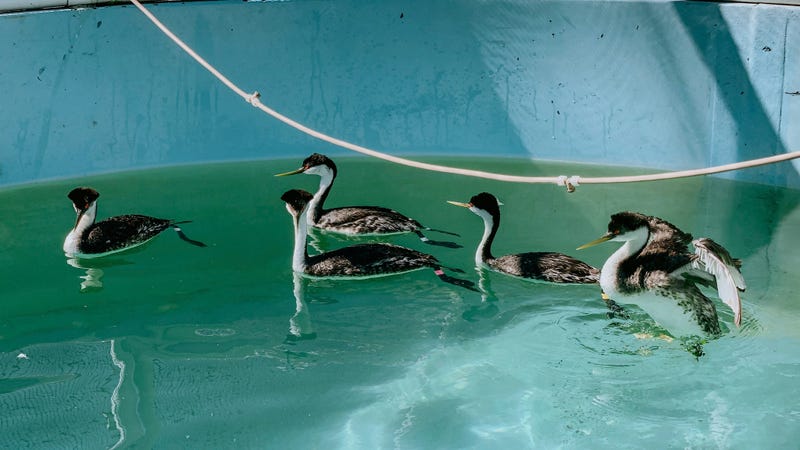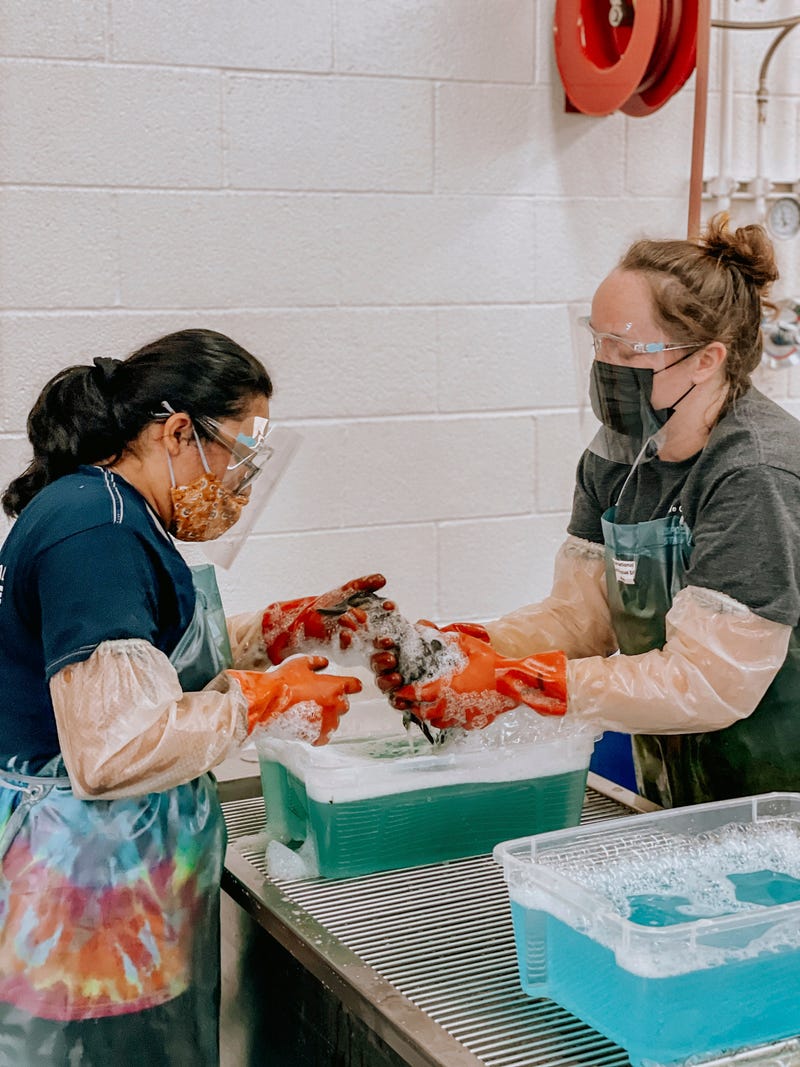
Two waterfowl rescued from a major oil spill off the coast of Huntington Beach earlier this month have been released back into the wild.
Volunteers at a local wildlife rehabilitation center spent days washing the birds ahead of their release. The pair included a ruddy duck and eared grebe.
The birds also recovered through a type of avian physical therapy, swimming in an outdoor pool in preparation for reintroduction to the Pacific Ocean shoreline.
“Those are two of the first animals that came in early in the spill—heavily coated, very affected—so getting them back into a clean environment is absolutely amazing,” Dr. Michael Ziccardi, director of the Oiled Wildlife Care Network, a division of the UC Davis School of Veterinary Medicine, told KTLA.

The network rescued 73 oil-covered birds in the wake of the spill. Twenty-eight survived.
Many were pulled from Talbert Marsh, an ecological reserve near Huntington Beach, home to roughly 90 species of birds.

A group of snowy plovers rescued by the network were said to be recovering nicely as of Monday—“preening, eating, and rousing (when a bird will puff up, shake, and then slick back down their feathers,” according to rescue staff.


